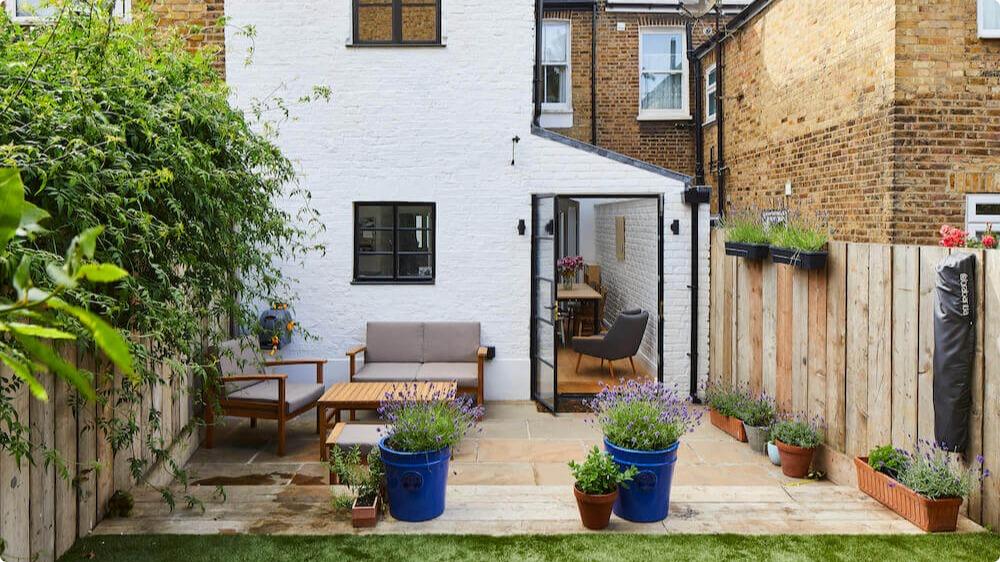Semi-detached house extensions allow you to add that much-needed space to your home, creating much-needed space and improving the flow of your living area.
Whether you're looking to expand your kitchen, add a lounge area, or increase your home’s overall square footage, understanding the best semi-detached rear extension or semi detached double storey extension floor plans is important.
If you've been wondering about adding that extension but aren't sure how to go about it, then this post is for you. In this article, you'll learn:
- The benefits of a semi-detached house extension
- What materials to use for your extension
- How much a semi-detached extension costs
- How much value a semi-detached extension can add to your home
- Permitted development rights for semi-detached house extension
- Design possibilities, including semi detached rear extension floor plans and semi detached double storey extension ideas
The endless range of design ideas and material options for your semi-detached extension can make the process an exciting adventure. Whether you're exploring a semi detached rear extension floor plan to expand your living space or a semi detached double storey extension idea for more room upstairs and downstairs, the possibilities are endless!
If you're ready to start on your extension, you should get your free Resi quote here.
What is a semi-detached house extension?
Semi-detached house extensions are any kind of enlargement added to semi-detached homes, which are properties with only one neighbouring home attached. They come in many designs and can serve several functions depending on your family’s needs and lifestyle..
When planning a semi-detached extension, you have multiple options, such as a semi detached rear extension that extends into the garden, offering more living space or a semi detached double storey extension for adding both extra floor space, rooms and height to your property.
Semi-detached house extensions can be designed to function as a kitchen, an extra bathroom or bedroom, a playroom, lounge, or utility room.
Whether you’re considering a simple semi detached rear extension floor plan to improve your living area or a more complex semi detached double storey extension idea to enhance both floors of your home, the possibilities are endless to create the perfect space for you and your family.
What are the benefits of a semi-detached extension?
Semi-detached house extensions offer several benefits like:
- More space for a growing family: Whether you opt for a semi detached rear extension to expand your living areas or a semi detached double storey extension to increase both ground and upper floor space, you'll create lots of additional room to accommodate your family’s needs.
- It’s a great way to let more natural light into your home, especially when considering design options like large windows or glass doors in a semi detached rear extension floor plan.
- It’s an excellent alternative to moving house. Moving can be stressful and costly. Instead of moving, a semi-detached extension can provide a way to stay in your home and gain the space you need.
- When done right, an extension can add value to your home. A well-planned extension can add significant value to your property. For instance, a semi detached double storey extension idea that adds an extra bedroom or bathroom can be highly attractive to future buyers.
By considering a semi detached rear extension or a semi detached double storey extension, you’re making a practical and valuable investment in your home.
Design ideas for semi-detached house extensions
There’s really no limit to design ideas when extending a semi-detached house. Depending on your family’s needs, your personal preferences, and the amount of space you have available, you can opt for any of the designs below.
Keep it simple with a single storey extensions
Single storey semi-detached house extensions typically extend to the side (side return extension) or the rear (rear extensions). They are perfect for extending your kitchen or adding that extra bedroom or utility room.

Single storey side return extensions
Side return extensions take advantage of the narrow strip of land running alongside the ground floor of your semi-detached home. Although the space may look small, extending into this strip of land can do wonders for your internal layout. Leaving you with a brighter and more spacious living space.
Single storey rear extensions
Single storey rear extensions are perfect for maximising the space at the back of your semi-detached home. They are usually the width of your existing property and extend 3 or 6 metres towards the back of the property.
Extend vertically and horizontally with a two storey extension
If you’re looking to add a substantial amount of room while maximising the ground space available, then you should consider a two storey extension — an extension with an additional floor. They're great for adding an extra bedroom upstairs while extending the kitchen downstairs.
Spice up your entrance with a porch
Whether you go with a simple timber structure or a more elaborate design, Adding an entrance porch to your semi-detached home will frame your home, give it a sense of depth, and provide some protection from the elements.

Maximise your attic
Adding a loft extension to your semi-detached house is the perfect way to turn your attic into a bedroom, office, or study. There are basically three types of loft conversions: dormer, hip to gable and mansard. However, if you're on a tight budget or prefer not to make any structural changes to your roof, you probably should consider a roof light loft conversion.
Relax, entertain guests or explore your hobbies with a garden room or additional building
A garden room or additional building such as a conservatory can serve as a lounge area for entertaining guests or spending time with your family. You could also make this additional building into an outdoor gym, study, or bar.
What materials to choose for your extension
Several materials exist with which you can use to build your extension. The material you decide on will depend on your budget, preference, and your permitted development rights.
The most common materials used in building extensions include:
Wood
Although wood is one of the oldest building materials in the UK, it's still quite popular. In fact, green oak frames seem to be popular among home extension builders these days. Wood is very useful as a cladding material, and a wooden exterior is an excellent idea if you'd like an extension that's distinct yet combines perfectly with the original house.
Glass
Glass is a great way to blur the division between the house and garden. They are perfect for adding a dash of drama to your extension and are famous for the amount of natural light they let in.
Blocks
Blocks are about the cheapest way to go when building dual-layer walls. You could always cover the block with rendering and a coat of paint to make it more visually appealing.
Brick
Bricks are versatile, readily available, and very handy when blending in with existing buildings. They’re also a great cost alternative to stone.
Stone
Stone is often essential for building extensions in areas of outstanding natural beauty (AONB), conservation areas, and national parks. This is especially true as the general rule of thumb mandates that the extension blends in with the home.
How much does a semi-detached house extension cost
Giving an exact value of how much a semi-detached extension will cost might be difficult as there are several determining factors.
These determining factors include:
- The type of extension
- The location of your home
- The materials you use
- Fittings and fixtures
The location of your home, the materials you use, the sort of finishing you go for, and the intended use of the extension all play a role in its cost.
Nevertheless, a semi-detached rear extension will cost somewhere between £1,500 to £3,500 per m2, with properties in London leaning towards the higher spectrum.
You should discuss your project with a Resi expert for a more tailored cost estimate.
We also offer financing solutions and will be happy to answer any of your questions.
How much value will an extension add to my semi-detached house?
The amount of value a semi-detached extension will add to your home will depend on the type of extension you go for, its finishing, and its use.
Nevertheless, you could add up to 20% extra value if you're able to add highly desirable space, such as an extra bedroom and ensuite.
Still, you should note that the real estate market fluctuates. It’s worth finding out the ceiling price for homes in your locality before going all out on that extension. That way, if you do intend to sell your home in the future, you can be sure that you'll be making a profit from the added room.
What are the important factors to consider when designing a semi-detached extension?
When adding a semi-detached extension, you must consider some important factors as you design. These points include:
- Lighting: When adding an extension to your home, you must consider the entrance of natural light into your home. Apart from proper positioning, incorporating roof lights and skylights will also let in more sunlight.
- The shared wall: When building a semi-detached extension, you should bear in mind that you share a wall with another property. Hence, when designing, be careful not to infringe on the privacy of your neighbours.
How much can you extend a semi-detached house?
You can extend your semi-detached house by 3m from the rear according to permitted development rights. However, with prior approval, you can go as far back as 6m. Please note that permitted development does not apply to flats, maisonettes, listed homes, or houses located in conservation centres.
Getting planning permission for your semi-detached house
Obtaining planning permission would typically involve the steps listed below:
- Determining a planning strategy
- Highlighting policy restrictions
- Choosing an optimal extension design
- Consulting relevant parties
- Submitting and monitoring your application
Although getting planning permission for semi-detached house extensions can significantly improve the home and add value to the property, the application process itself can prove to be an arduous experience, especially without the proper guidance.
From planning to design complexities and then the actual application, bearing in mind that your project could be disapproved, compiling your own application can overwhelm anyone.
At Resi, our in-house planning team is skilled at obtaining planning permission for all sorts of projects. We’ll hold your hand through the entire process, from determining a planning strategy to monitoring your application. Get a quote for our services here.
Semi-detached house extension under permitted development
You can construct a semi-detached house extension under permitted development if you adhere to the stated requirements.
The criteria for permitted development rights vary with each type of semi-detached house extension. We recommend discussing your project with a Resi expert to ensure compliance.
For planning services, we have a team that can help you arrive at an extension design that maximises your available space and meets your family’s needs while adhering to permitted development rights.
In need of financing? Contact us to learn more about our financing solutions.























